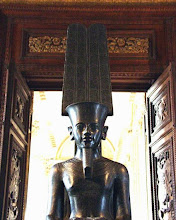King Arthur's legend lives on at Tintagel

"Storms and gusting winds have chiseled away at this corner of southwestern England for centuries, but the legends that inhabit the area still loom large.
The rocky headland near the village of Tintagel has become so entwined with the legend of King Arthur that its true history seems almost incidental, despite a collection of rough stone foundations and listing walls that hint at its rich past.
According to various poems, stories and popular myths, it was here, at the fortress of a Cornish duke, that King Arthur was conceived. Later versions of the story say Arthur was born at the site and may have lived here for a time.
There's no question a medieval castle was built at Tintagel by Richard, Earl of Cornwall, a younger brother of King Henry III. Tantalizing remnants of that structure -- crumbling stone barriers and doorways -- are still visible.
But regardless of its history, real or imagined, Tintagel offers remarkable glimpses of sheer cliffs that stand tall above the sea.
The massive outcropping is almost an island, connected to land only by a narrow and deeply eroded passage. For travelers willing to hike dirt paths and climb long flights of wooden stairs that curl up the cliffs, the visual delights are many.
Those who make the trip to Tintagel can wander the crags and dizzying cliff tops, stalk the ghost of King Arthur and soak up the salty air and scenery for its own sake.
You can also tour what is believed to be the inner courtyard of Richard's castle and peer down at a sandy inlet where ships once were loaded with cargo.
Robert Tremain, a site supervisor for the preservation group English Heritage, which manages the site, explained that a mixture of lime and sand was occasionally applied to the walls of the ruins to protect them.
"You can tell the way the weather has been beating at this," he said, pointing to pitted areas amid the slabs of slate. "The elements are always there. It's the natural erosion from the sea and the storms."
Richard may have built the castle at the site because of the Arthurian legend, already well-known by the time he began erecting the structure in the 13th century, he said. "He wanted some of that glory to rub off on him," Tremain said.
The story behind the legend of King Arthur was first introduced by Geoffrey of Monmouth, a writer whose "History of the Kings of Britain" was among the most popular books of the Middle Ages, though it was largely fictitious.
The book describes a fortress at Tintagel belonging to a Cornish duke named Gorlois whose wife attracted the attention of a king, Uther Pendragon. The king summoned a sorcerer, Merlin, to magically give him Gorlois' appearance so that he could enter the castle.
In return, Merlin asked that Uther father a child -- Arthur -- to be raised by Merlin until the child fulfilled his destiny of becoming king.
By the time Richard built his castle, perhaps to curry favor with the local Cornish population, the story had been elaborated upon, portraying Tintagel as the place where Arthur was born and perhaps lived, according to an English Heritage guidebook.
Tintagel has also surfaced in versions of the famous love story of Tristan and Isolde. A centuries-old telling of the tale identifies the site as the court of King Mark, Tristan's uncle.
But tangible evidence of Tintagel's varied past abounds.
Artifacts unearthed in the area suggest it was an outpost on the fringes of the Roman Empire at one time. Pieces of wine jars and other luxury wares from Spain, North Africa and the eastern Mediterranean could mean a king or prince frequented Tintagel.
A wall built from dirt, rock and timber indicates it may have been a stronghold in the Dark Ages.
In the 18th and 19th centuries, the area became famous for its slate quarries, which employed local men.
The path at the top of the headland winds past ruins of houses built in the Dark Ages and reaches a field of tawny grass enclosed by a low stone wall -- an area thought to have been a medieval garden.
Other historical features include a well, a naturally ventilated tunnel that may have been used as a medieval larder and a small chapel built at the end of the 11th century.
Looking across from the southern cliffs, there is a huge chasm at the coastline, pounded by frothy waves, and buildings on the horizon in the nearby village of Tintagel, where pubs and guest houses line narrow streets.
Generations of visitors, including writers such as Dickens and Tennyson, have traveled to Tintagel to see the place reputed to be a cornerstone of the Arthurian legend. For today's visitors, its natural splendor may be just as rewarding."
Source






